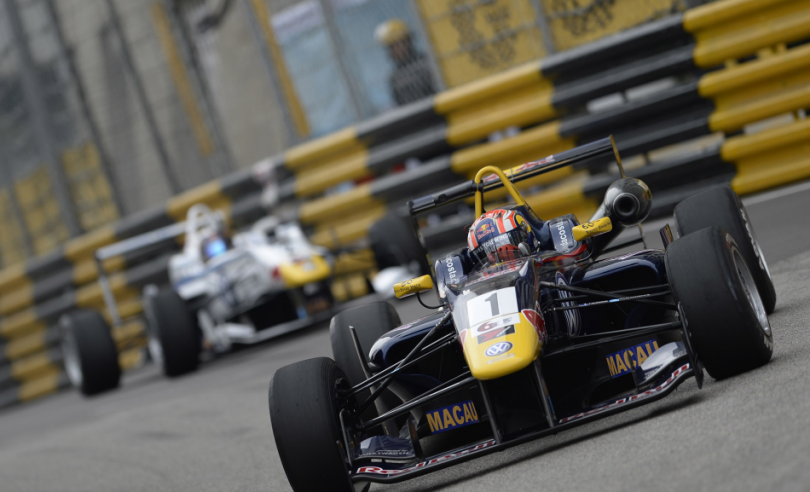This article first appeared in the Sep/Oct 2015 issue of WGM.
Long before it became the world’s number one gaming hotspot, Macau was busy making a name for itself in a vastly different pursuit – motor racing. The Macau Grand Prix began as a small event for local enthusiasts in 1954 but, as it approaches its 62nd year this November, has become one of the most famous races on the planet with an annual audience of millions. WGM takes a walk down memory lane as we retrace the Macau Grand Prix’s amazing story.
![Image: GCSi]](http://www.wgm8.com/wp-content/uploads/2015/08/images_wgm_1037_the-pride-of-macau-1.jpg)
Image: GCS
Sixty years later, in 2014, what is now known around the world as the Macau Grand Prix attracted an incredible 213 competitors from 34 countries across its eight race schedule.
The four day race weekend saw a whopping 650,000 visitors flood into the city – the equivalent of Macau’s entire population – with 80,000 spectators watching the race. And with 84 networks broadcasting the event globally, no fewer than 1,000 media professionals were granted accreditation to provide coverage.
At a time when the Macau SAR Government is pushing casino operators to focus on non-gaming offerings in order to boost tourism and lower the city’s reliance on gaming, the Macau Grand Prix stands proudly as its single greatest tourist attraction.
“The success of the Macau Grand Prix is a direct result of the hard work, diligence and formidable capabilities of generations of local residents,” the Macau Grand Prix Committee’s Coordinator, João Manuel Costa Antunes, told WGM.
“As a major international sporting event, by staging the Grand Prix we are able to show the world Macau’s extraordinary abilities.
![Image: CGPMi]](http://www.wgm8.com/wp-content/uploads/2015/08/images_wgm_1037_the-pride-of-macau-2.jpg)
Image: CGPM
“Amongst its myriad roles, the Grand Prix plays an important part in the policy of tourism diversification and establishing Macau as a major visitor destination. This year we celebrate a decade as a UNESCO World Heritage Site – an example of the historic and cultural element of our tourism offering – while at the opposite end of the spectrum we have arguably the most unique international motorsport event in the world today.
“There are countless intangible benefits from promoting Macau via a major international sporting event and sports tourism is a multi-billion dollar global industry. Already this year, the total amount of the sponsorship secured, including title sponsorship of the event and races, the commercial race, tires and vehicles, represents an increase of 13.62 percent compared with 2014.
“With more than 10 million hits on the official Grand Prix website in just the four days of the event alone in 2014, there is certainly no shortage of attention from across the world.”
The Macau Grand Prix is born
Before taking a closer look at what to expect in 2015, let’s first step back in time to the key moments that have made the Macau Grand Prix what it is today.
It’s well known that the Macau Grand Prix initially came about by accident. Macau, a burgeoning port town at the time, was home to less than 300 vehicles in 1954 so a motor race was the last thing on the minds of Carlos Silva, Fernando Macedo Pinto and Paulo Antas when they began discussing the possibility of holding some sort of motorized treasure hunt around its cobbled streets.
However, although they envisaged a relatively small event, they had no idea how to put it together so turned to the Motor Sports Club of Hong Kong for assistance. Intrigued by their plan, Swiss national Paul Dutoit agreed to meet the ambitious trio in Macau and after being given a guided tour of the proposed circuit uttered the words that would change the course of history.
“This is not a treasure hunt,” he told them. “What you have here is a Grand Prix!”
![Image: CGPMi]](http://www.wgm8.com/wp-content/uploads/2015/08/images_wgm_1037_the-pride-of-macau-3.jpg)
Image: CGPM
With a brand new street circuit suddenly available to them, preparations for the first ever Macau Grand Prix hit overdrive. This included covering the gutters and painting all trees and lamp posts white throughout the entire length of the new 3.9 mile “Guia Circuit”, which wound its way from the old Mandarin Oriental Hotel (now named Grand Lapa) down to what is now known as Lisboa Bend, back up through Macau’s narrow streets to the reservoir and along the seafront.
The first ever Macau Grand Prix was held on the weekend of the 30 and 31 October 1954 and included two events – a speed and regularity trial for production cars on the Saturday and the Grand Prix itself on the Sunday. The Grand Prix attracted 15 drivers and featured a Le Mans-style start whereby the drivers would race across the track on foot before jumping in their cars, starting their engines and taking off as quickly as possible! The event would then run for four hours with the driver to have covered the most distance in that time declared the winner.
Eduardo de Carvalho was the man to claim that honor and etch his name in the record books as winner of the first ever Macau Grand Prix.
The impressive crowd of 20,000 enthusiastic spectators also ensured the race would become a permanent fixture on the calendar. Incredibly, the Guia Circuit has remained almost unchanged in the 61 years since with only two instances of significant alteration. The first came in the spring of 1955 when the entire back section of the circuit, which comprised of dirt and cobblestones, was dug up and replaced with asphalt to avoid the visibility problems responsible for a number of crashes in the 1954 race.
The second came three years later when the Melco hairpin was slightly modified, reducing the length of the track to 3.8 miles. Yet those exceptions aside, the Guia Circuit has remained a rare constant amid Macau’s ever-changing landscape.
Evolution
The 1950s and early 1960s saw the Macau Grand Prix organizers experiment with adding new races and vehicle classifications to the schedule, but despite adopting official FIA regulations it very much remained an amateur event until 1966 when Belgium’s Mauro Bianchi took the checkered flag.
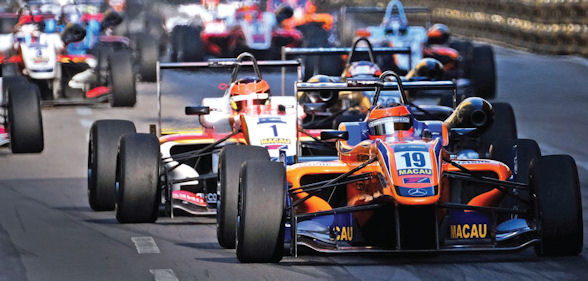
\Image: CGPM[i]
The ’60s proved to be a decisive decade in the Grand Prix’s evolution. In 1967, just a year after Bianchi made his mark, the Macau Motorcycle Grand Prix joined the schedule for the first time – making it the only annual event in the world where the program is shared by elite riders and drivers alike.
Sadly, 1967 was also the year the Guia Circuit claimed its first life with Filipino driver Arsenio Laurel killed when his Lotus crashed into a barrier and burst into flames. Laurel had previously become the first two-time winner of the Macau Grand Prix after claiming consecutive victories in 1962 and 1963.
Perhaps the two most significant additions to the annual schedule came in 1972 and 1983 respectively. 1972 was the year the touring car race known as the Guia Race of Macau was introduced – first as a one-off international race and since 2005 a round of the World Touring Car Championship. It has typically attracted the world’s elite touring car drivers while becoming a favorite of the fans due to the incredibly tight racing.
Then in 1983 came the single most important change in Macau Grand Prix history with the decision to adopt Formula 3 as its premier category. Organizers had originally been toying with the idea of Formula 2 instead, but quickly scuttled the suggestion when told the bigger Formula 2 cars would require the circuit to undergo major modifications if they were to race there.
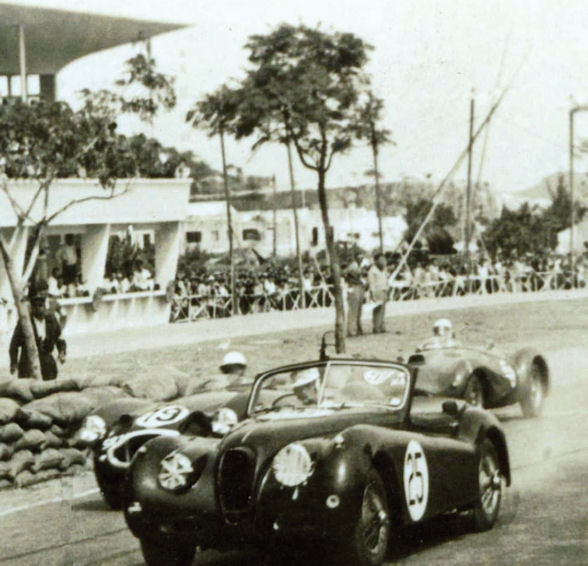
The inaugural Macau Grand Prix in 1954
So Formula 3 it was for the Grand Prix’s 30th Anniversary – and what a decision it turned out to be! The race quickly became a breeding ground for the hottest young drivers on the planet with the inaugural race in 1983 won by none other than Ayrton Senna! Driving for Teddy Yip’s Theodore Racing Team, Senna proved too hot for a field that also included his future McLaren F1 teammate Gerhard Berger and another emerging talent in Martin Brundle.
With the exception of the Formula 1 World Championship and the Indianapolis 500, the Macau Formula 3 Grand Prix is considered the world’s most prestigious open-wheel race and certainly its number one stand-alone event.
While the Guia Circuit has remained largely untouched over the years, the same can’t be said for its surrounds with a comprehensive overhaul of the Grand Prix Building currently in the works. The first phase of development saw the new Race Control Tower completed in 2013 while the next phase will include greatly expanded facilities for media, sponsors and organizers as Macau’s premier event continues to grow.
“All the facilities – the Grand Prix Building, the paddock, the underground carpark and the Race Control Tower – are used 365 days of the year,” said Mr Costa Antunes. “The new control tower has been a wonderful opportunity to welcome students and teachers to show them the inner workings of the Grand Prix, ensuring the next generation can gain a greater understanding and appreciation of their precious sporting heritage.”
Teddy Yip
Of all the people to have played a role in making the Macau Grand Prix what it is today, none had such a dramatic individual impact as the late, great Teddy Yip. Widely referred to as “The Father of the Macau Grand Prix”, Yip competed as a driver 11 times with his best result being a third place finish in 1958.
But having previously built a successful business empire in Hong Kong as well as founding SJM alongside Stanley Ho, Henry Fok and Yip Hon, it’s no surprise that his greatest contribution to the famous race came from outside the cockpit.
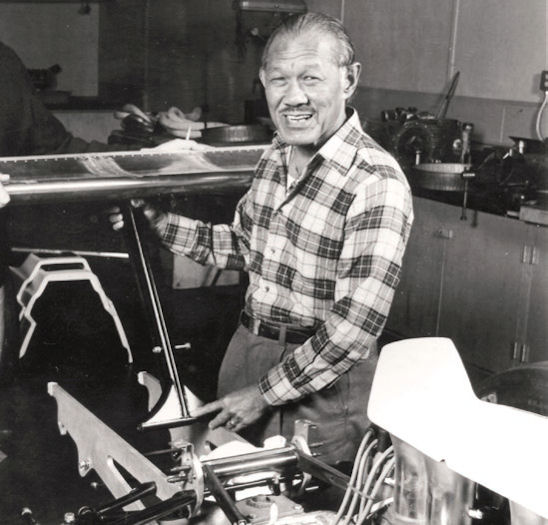
Teddy Yip
It was 1974 that Yip first became involved in the business side of motor racing when he sponsored Australian driver Van Schuppan in Formula 5000 and then in Formula 1 with Team Ensign. His interest piqued, Yip also launched his own team– Theodore Racing – as he continued to up his involvement in Formula 1 by focusing his resources into building a competitive F1 car. It proved a far more difficult task than he had imagined against the enormous resources of the factory teams, however Macau was a different story.
With Schuppan behind the wheel, Theodore Racing won the Macau Grand Prix for the first time in 1974 and again in 1976, then another two times with Geoff Lees driving in 1979 and 1980.
Yip was the driving force behind the Macau Grand Prix’s switch from Formula Atlantic to Formula 3 in 1983, his influence directly responsible for taking the event to the next level on the international stage. And it was Yip’s Theodore Racing Team that Ayrton Senna was driving for when he stormed to victory in that inaugural Formula 3 race.
In total, Theodore Racing won the Macau Grand Prix six times while the list of future greats to drive for Yip’s team included the likes of Mika Häkkinen, Martin Brundle, Stefan Johansson, Emanuele Pirro, Eddie Irvine, Gil de Ferran, Christian Fittipaldi and Rubens Barrichello among others.
Even when he quit most of his other motor sport pursuits to focus on Formula 1 in the 1970s, Yip always made time for the Macau Grand Prix and played a vital role in taking the race to the world. He passed away in 2003 at the age of 96 but his legacy lives on.
What’s new in 2015?
The big news at the 2015 Macau Grand Prix will be the debut of the FIA GT World Cup, which replaces the Macau GT Cup after seven successful years. The Macau GT Cup has traditionally formed part of the GT Asia Series but the new FIA GT World Cup will be a stand-alone race and another highly prestigious event on the annual calendar.
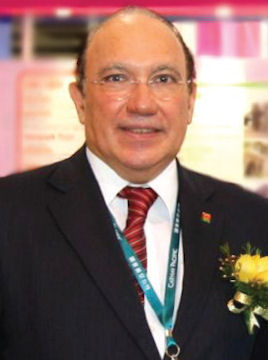
Macau Grand Prix Committee Coordinator Mr João Manuel Costa Antunes
The invitational race will see 28 entries comprising three drivers from each of seven of the world’s major GT manufacturers with another seven spots on the grid reserved for local entrants.
With the best drivers from GT championships around the world to attend, it also promises to be the closest fought race of the weekend thanks to the FIA’s GT3 Balance of Performance regulations which sets limits on each car’s power, weight, engine management and aerodynamics to ensure no single manufacturer becomes dominant.
Mr Costa Antunes described the new FIA GT World Cup as a huge coup for Macau.
“We’re delighted that the Macau GT Cup is this year afforded the prestigious title of the FIA GT World Cup – the newest title from the sport’s governing body,” he said. “We’re proud that Macau’s efforts in organizing its GT Cup have been recognized by the FIA with the privilege of hosting a world first in sportscar racing. We expect a superb entry list of the best sportscar drivers on the planet in the most sophisticated GT racing cars in existence.”
This year’s race weekend will also utilize an enormous local workforce including 720 marshals managing the course.
“The Macau Grand Prix requires the dedication of hundreds of Macau residents filling every imaginable position – race direction, track and flag marshalling, scrutineering, medical and emergency services, security, design, architecture, PR and catering,” explained Mr Costa Antunes.
“Macau residents are responsible for the successful implementation of every single element of the Grand Prix. Preparation for the Grand Prix is an on-going, year-round operation headed by the Macau Grand Prix Committee … which works closely with Macau’s official motorsport body, the Automobile General Association Macao-China (AAMC), to give comprehensive practical and theoretical training for race officials.
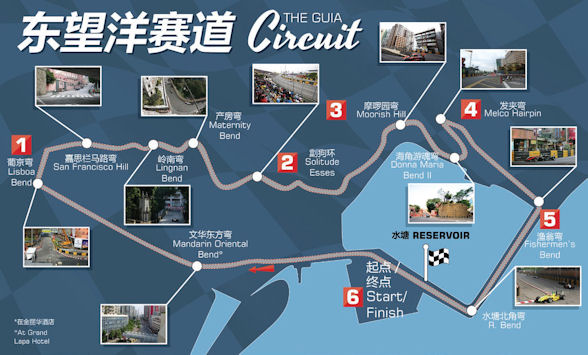
“We bring in industry specialists to conduct sessions and seminars and we’re proud that each year our Macau officials attain the very highest international levels of competence.
“It’s a special event and like Macau, the Grand Prix is unique in so many different ways – the Guia street circuit itself, its 62-year heritage, a programme which brings together prestigious, international headline races for single seater, touring cars and sportscars as well as motorcycles – all set in one of the most exciting destinations in the world. Macau is a city which embraces its Grand Prix by erupting in a celebration of sport, culture and entertainment.”


